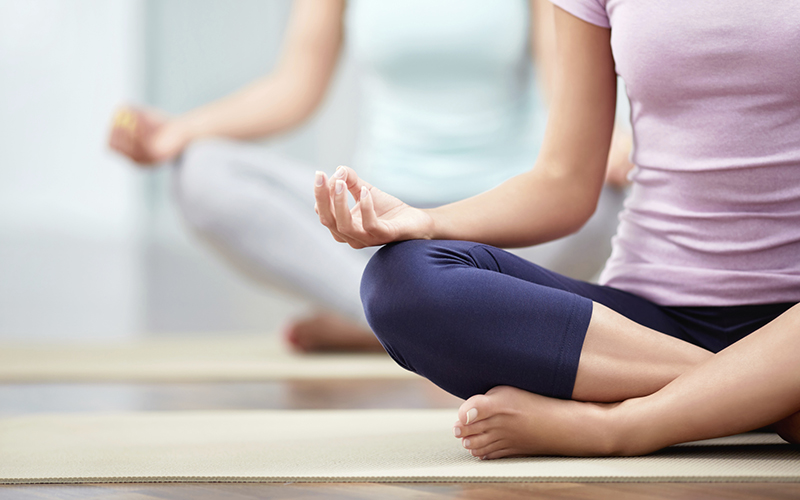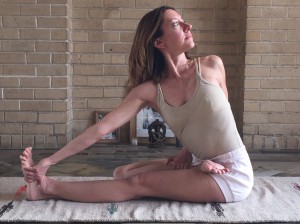
by guest blogger Holly Walck Kostura, certified Iyengar Yoga teacher
This is the bad news: The word yoga has been reinvented. Much of what is being sold to the public as yoga is hyper-focused on the practice of postures, which is less than 1 percent of what yoga actually is. While an asana (posture) is, as author and professor Edwin Bryant of Rutgers University describes it, “a benevolent way of keeping the body in good condition,” just because you practice poses does not mean you are practicing yoga.
The good news here is if you enjoy practicing the posture part of yoga, then 99 percent more of what yoga is is waiting for you!
In the first part of this series we explored the first of the hallmarks of Iyengar Yoga, alignment, as a tool to bring the scattered, outgoing mind into a focused state. We practiced a series of different postures that had a common action and set an intention to focus on repeating that action over and over again in every pose. This action is dharana, or concentration, which leads to dhyana, or meditation. In his book Light on Life, B.K.S. Iyengar writes:
Many moderns use their bodies so little…they move from bed to car to desk to car to couch to bed, but there is no awareness in their movement, no intelligence. Action is movement with intelligence. The world is filled with movement. What the world needs is more conscious movement, more action.
Infusing your motions with action awakens the intelligence and over a period of time, enlivens and strengthens the mind. Bringing intelligence into the picture when you practice is achieved not only with attention to alignment in each pose, but also with insightful sequencing from one pose to another, from one day to another.
Sequencing develops the mental state required to actually practice yoga, an art and a science that, in its highest form, helps us learn about ourselves, cultivates the ability to transcend self-limiting beliefs, and graces us with the opportunity to discover our true nature.
The sequence we practiced last month taught the actions required to do one of the best known of all the poses, Padmasana, Lotus Pose. The benefits of the asana include relieving and invigorating tired, congested legs; soothing an anxious mind; and cultivating a deep sense of tranquility. It’s a challenging pose for many, and in the video below I share with you two ways to approach it (sitting up or lying down) and variations once you are in it: kneeling, arm balancing, bending backward and forward.
May your practice of yoga support you, much like the lotus flower itself that emerges from dark, murky water into pure, white light.
Namaskar,
Holly
Practicing Padmasana: Two Ways to Find Your Way In
Practicing Padma-Asanas: The Padmasana Cycle
 Holly Walck Kostura uses the healing practices of Ayurveda and Iyengar Yoga to secure her to the core of her being. Combining her bachelor’s degree in nursing with her certification in Iyengar Yoga gives her the ability to approach her students from a place of wholeness and infuse her yoga classes with a unique flavor. Find her online at yogawithholly.com.
Holly Walck Kostura uses the healing practices of Ayurveda and Iyengar Yoga to secure her to the core of her being. Combining her bachelor’s degree in nursing with her certification in Iyengar Yoga gives her the ability to approach her students from a place of wholeness and infuse her yoga classes with a unique flavor. Find her online at yogawithholly.com.




No comments yet.